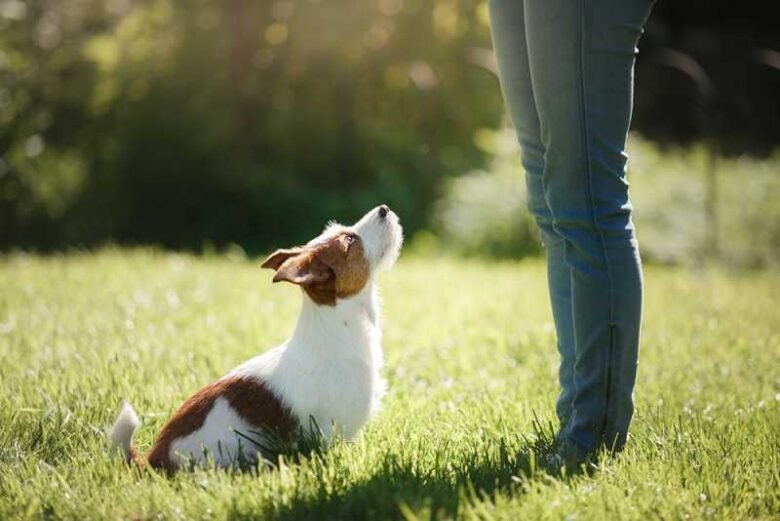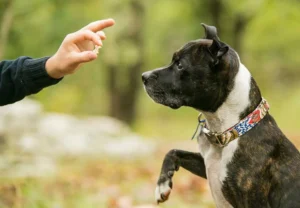One of the most important parts of owning a dog is training it. In addition to helping keep your dog safe, it can also foster a positive bond between you and your pet. Teaching your dog basic commands and behaviors to make everyday life easier and more enjoyable is called basic dog training. Here are some great tips to help you through the basics of dog training.
1. Recognize Your Dog’s Behavior
Before you begin any training, it’s important to understand your dog’s behavior and body language. Dogs communicate using a variety of vocalizations, gestures, and body language. Effective training requires that you can interpret your dog’s needs and responses based on these signals. For example, a frequently wagging tail indicates happiness, while a tucked tail can indicate fear or submission. By understanding these indicators, you can tailor your training strategies to meet your dog’s emotional needs and ensure a happy learning environment.
2. Establishing Clear Communication
Effective training requires good communication between you and your dog. To help your dog understand what is expected of him, use hand signals and verbal commands that you use consistently. To prevent your dog from getting confused, assign clear basic terms to each command, such as “sit,” “stay,” and “come.” Then use the same commands regularly. When you combine verbal commands with hand signals, your dog can more easily learn the command and associate it with the desired behavior.
3. Affirming Feedback
An effective training technique is positive reinforcement, where a reward is given when your dog performs a desired behavior. Treats, praise, or toys can all serve as rewards and should be given to your dog once he completes the desired behavior. This way, your dog is more likely to repeat the behavior in hopes of receiving a reward. For example, when your dog is learning the sit command, reward your dog with a treat as soon as he sits. In addition to encouraging excellent behavior, positive reinforcement helps build a strong bond between you and your dog.
4. Maintaining Order is Key
When training a dog, consistency is key. To prevent your dog from getting confused, make sure everyone in the household is using the same commands and training methods. Maintaining a routine and expectations promotes your dog’s learning process and helps him understand what is expected of him. For example, if your dog is being trained to stay off furniture, make sure everyone in the house follows this guideline. Training methods that continually improve the learning process and produce better results.
5. Persistence and Patience
It is crucial to be patient when training your dog, as it takes time. Like people, dogs learn at different rates, and some dogs may take longer to master a specific command. Avoid getting angry or using punishment-based techniques, as these can hinder development and damage your relationship with your dog. Instead, be persistent and approach training with a positive attitude. When teaching a dog a difficult command, start with small steps and work your way up to the desired action.
6. Quick Training Course
Training that is short and frequent is generally more successful than training that is long and irregular. Because dogs have short attention spans, try to keep training sessions between five and ten minutes. A single longer session may not produce the same results as multiple shorter sessions spread out throughout the day. This method prevents your dog from becoming overwhelmed or bored and keeps him interested.
7. Interaction
A key part of basic dog training is socialization. Exposing your dog to a variety of situations, people, and animals will help him become more confident and adaptable. Although socialization can continue into adulthood, it should begin early in your dog’s life. Positive social experiences can improve your dog’s overall health and help him avoid behavioral problems.
8. Avoid Common Mistakes
Avoid common training pitfalls such as punishment, inconsistent behavior, and unreasonable expectations. Inconsistent behavior can confuse and frustrate your dog. Physical correction or scolding are examples of punishment-based techniques that can cause fear and panic. To train your dog, set reasonable goals and recognize each small step toward success. The secret to effectively training and raising a well-mannered dog is to adopt a pleasant, encouraging attitude.
Conclusion
A key component of pet ownership is basic dog training to promote your dog’s happiness and good behavior. You can teach your dog basic commands and address behavioral problems by understanding your dog’s behavior, using positive reinforcement, and being consistent. Remember to be encouraging, patient, and persistent throughout the training process. You should also enjoy a fulfilling relationship as you and your dog work together to achieve your training goals.
FAQs
1. What is basic dog training?
Teaching your dog the basic commands and behaviors necessary for daily life is called basic dog training. This includes basic behavior problems, such as jumping and excessive barking, as well as commands such as “sit,” “stay,” “come,” and “leave.”
2. How do I start training my dog?
Begin by identifying your dog’s behavior and then giving him precise and reliable commands. Start with one command at a time and reward the desired behavior with positive reinforcement. Training sessions should be short and frequent, and you should be patient with your dog’s development.
3. What is positive reinforcement, and why is it important?As part of a positive reinforcement training method, you can give your dog a toy, treat, or praise when he performs a desired behavior. By using this technique, you can strengthen your bond with your dog and encourage him to repeat the activity in anticipation of a reward.
4. How long should each training session last?
Training sessions should be short, usually lasting five to ten minutes. In general, multiple short meetings throughout the day are more productive than one long meeting. Doing this will help prevent your dog from becoming overwhelmed or bored.
5. How do I deal with my dog’s behavioral problems?
Modifying your dog’s behavior and providing positive reinforcement are two ways to deal with behavioral problems. For example, if your dog jumps on people, teach him or her to “sit” and reward him or her when he or she does. It can also be helpful to identify the reasons behind the behavior and provide distractions or other activities instead.



